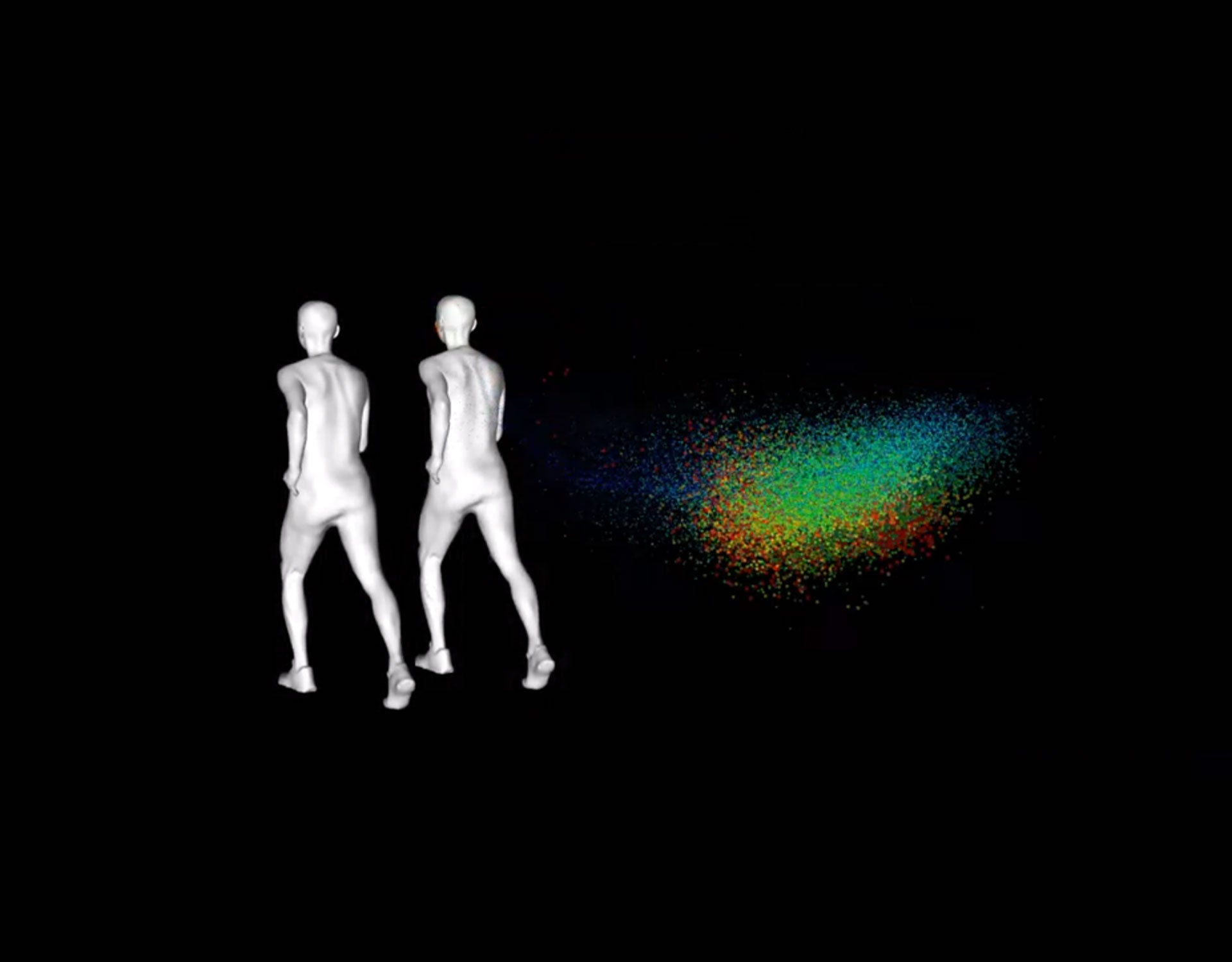
Computer simulations using technology normally applied to the aerospace and automotive industries have found that the 2m distance advised to prevent the spread of the Covid-19 coronavirus is inadequate for exercise.
Despite a lockdown, UK citizens are allowed to go out to shop for food and for exercise, as long as they stick to government advice by keeping a distance of 2m from other people. However, physics-based simulations by software company ANSYS have shown that the coronavirus can still spread at this distance during exercise.
Simulations using the company’s software, which is normally used by organisations such as NASA and Ferrari to model the performance of fluid in aircraft and race cars, has shown that the safe distance to prevent the transmission of the coronavirus is significantly higher for some forms of exercise.
For running, where another runner is behind you, Ansys has found that the minimum safe distance is 3m. For cycling it is even higher, at 10m, although a 2m gap is acceptable when overtaking.
Determining safe coronavirus distance advice for exercise
The technology used to create the simulations is normally used for more industrial purposes, making this a relatively novel application of Ansys’s software.
“The simulations were created using Ansys’ Computational Fluid Dynamics (CFD) simulation software. This tool is used in a range of applications, such as aerospace and automotive, to deliver accurate quantitative analysis of how air and liquid flows,” Thierry Marchal, global industry director for Healthcare at Ansys, told Verdict.
How well do you really know your competitors?
Access the most comprehensive Company Profiles on the market, powered by GlobalData. Save hours of research. Gain competitive edge.

Thank you!
Your download email will arrive shortly
Not ready to buy yet? Download a free sample
We are confident about the unique quality of our Company Profiles. However, we want you to make the most beneficial decision for your business, so we offer a free sample that you can download by submitting the below form
By GlobalData“Simulation techniques have been used for decades in these industries and others – every plane you see and car you ride in could not have been designed without the use of physics-based simulation.”
However, this is by no means the first time it has been applied to physical activity, making it easy to apply the simulation to the distance spread of the coronavirus during exercise.
“The technology is already widely used in the world of sport to identify areas where elite and professional athletes can improve performance and, importantly, safety. For example, researchers use a combination of simulation and wind tunnel tests to further develop understanding of complex aerodynamics in elite cycling, for the purpose of achieving decisive gains,” said Marchal.
“We were able to quickly deploy the technology to identify that general social distancing guidelines are insufficient when exercising in proximity with others.”
Ensuring accurate simulations
Given the importance of providing reliable information to combat the spread of the coronavirus, it is vital that such simulations are accurate, however Ansys is confident that its findings are reliable.
“The laws of physics are just that – they’re laws, not suggestions. Simulation software operates in line with these fundamental laws to deliver extremely accurate results and other industries, from aerospace, to the nuclear industry, rely on the results for their safety critical operations,” said Marchal.
“For the social distancing simulations, Ansys has been working alongside leading academics in the world of research to assess and verify the information.”
For those undertaking exercise and wanting to ensure they maintain a safe distance during the coronavirus crisis, however, there are other factors to bear in mind.
“Of course, there are variables in every environment and it’s not possible to capture them all in a single simulation. For example, wind speed and direction can vary the distance and trajectory of droplets from a cough,” he said.
“A simple consideration for anyone concerned by wind direction would be to avoid breathing, coughing or speaking to another person when the wind is blowing into them or from behind – by facing sideways against the wind, the trajectory of droplets is less likely to be as impactful as when wind is blowing into or away from you.
“At all times though, keep a safe distance – this is the most important consideration for all of us.”
An update to official advice?
Given the findings, should the UK government update its official advice about distance while exercising during the coronavirus crisis? Marchal does not go so far as to make such a suggestion, but does express hope that Ansys’s simulations will help inform future government advice.
“There are many sources of information that go in to developing official advice. Ansys is in contact with a number of public and health authorities around the world that are aware of the possibilities that simulation presents in analysing and then visualising the information that they use to develop guidelines,” he said.
“Our hope is that these simulations will help provide additional insights that those looking holistically at the overall advice being developed can leverage to make even more informed decision making in efforts to tackle Covid-19.”
Read more: Coronavirus case studies: How Whitgift School is manufacturing hospital visors




